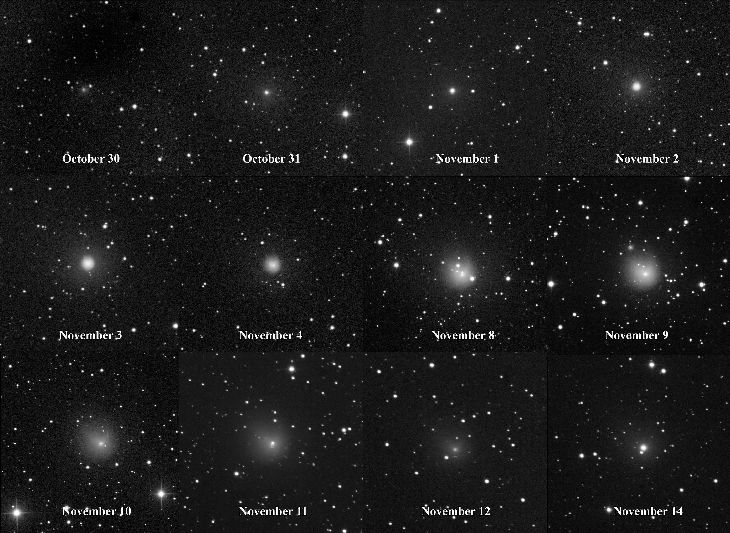News
Once in 70 years: a rare "devil's comet" is heading towards Earth
How long has it been since you last saw a comet in the night sky? This year, we will have such an opportunity. An extremely interesting celestial object called 12P/Ponce-Brooks is heading toward Earth, which has already made a splash among astronomers last year, earning the nickname "the devil's comet".
Space.com reports that the comet will reach its perihelion on April 21 and will delight amateur astronomers with its characteristic flashes of brightness. But you will have to use binoculars or a telescope to observe it.
Where to look for the comet
The object can already be observed in the Pisces constellation. As it approaches the Sun, 12P/Pons Brooks becomes brighter and can be freely viewed through good binoculars. By the end of the month, the brightness of the object should increase to 5th magnitude. This means that under good conditions it will be visible to the naked eye against the background of the zodiacal constellation Aries. It may also form a short tail at this time.
On April 21, the object will pass perihelion, the closest point of its orbit to the Sun at a distance of 116.8 million km from the star. 12P/Ponce-Brooks will pass 22 degrees northeast of the Sun in mid-April, but then will quickly disappear from the view of the Northern Hemisphere, but will become visible in the Southern Hemisphere. It is likely to dim to 6th or 7th magnitude by the end of May, and to 8th or 9th magnitude by the end of June.
Astronomers using special equipment will be able to record periodic flares characteristic of 12P/Pons-Brooks during this time. But they are unlikely to be available to amateurs, because the brightness of the Sun, which the comet is approaching, will be much higher.
It is also not expected that the comet will be visible during the total solar eclipse on April 8. At that time, its predicted brightness will be about 4.5, which is too dim. Even if there is an outburst at this time, it will not be enough.
What is known about the celestial object
The comet was discovered back in the 19th century by two astronomers who observed it with rather primitive telescopes. The Frenchman Jean-Louis Pons (1761-1831), who discovered 37 comets, noticed this object through a telescope of his design, which he called the "Grand Chercheur" ("Great Seeker"). It happened on July 12, 1812. During that visit to the Sun, the comet reached the fourth magnitude at its peak, meaning it was very bright. According to Pons' calculations, it took the comet somewhere between 65 and 75 years to make a revolution around the Sun.
The British-born American astronomer William R. Brooks (1844-1921) accidentally spotted the same object on September 2, 1883. After making certain calculations, he was convinced that he was observing the same comet that Pons had observed more than half a century earlier. In astronomical catalogs, the object is named after both scientists.
What makes Comet 12P/Pons-Brooks special
Comet Pons-Brooks has an orbital period of about 71 years and is considered to be the same type of object as Halley's Comet. That is, a person can see it only once or twice in their lifetime. Since it was the twelfth comet for which the orbital period was accurately calculated, it was given the catalog name 12P/Pons-Brooks.
The history of science knows of earlier evidence of this comet. Thus, in 2020, German astronomer Mike Meyer demonstrated that it was most likely observed by Chinese astronomers in November 1385 and Italian scientists in January 1457. There is also evidence to suggest that ancient records of a bright comet dating back to 245 AD could also have been the result of observations of the same comet.
Of particular interest in 1883-1884 was the fact that in several cases this comet was prone to sudden outbursts or a sharp increase in brightness. This feature could be observed on July 20 last year. Then, an unexpected burst of brightness caused it to briefly become about 100 times brighter, and the shell of gas around its nucleus expanded and began to resemble a horseshoe, for which the object was nicknamed the "devil's comet." Other outbreaks occurred on October 5, November 1 and 14, December 14, and the last time on January 18. The next time the Earth's inhabitants will be able to see 12P/Ponce Brooks is in 2095.
Subscribe to OBOZ.UA channels in Telegram and Viber to keep up with the latest events.





























